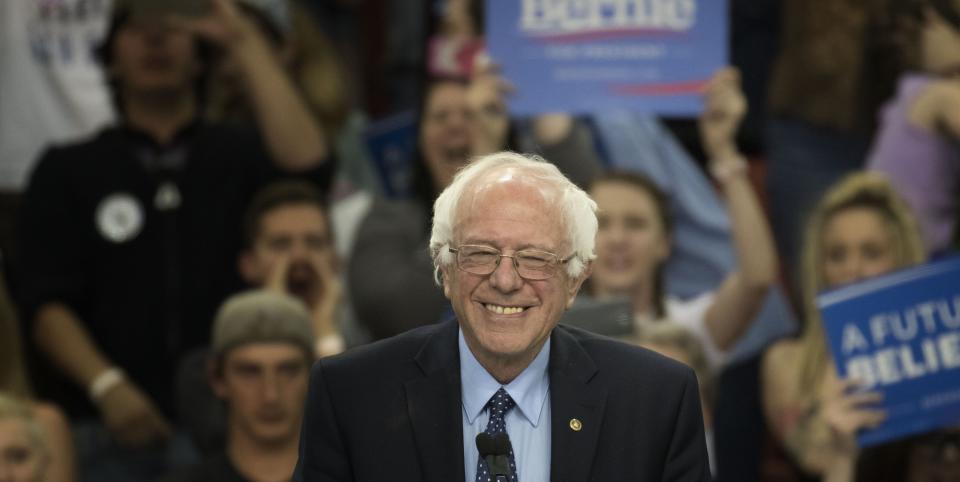Bernie Sanders’ free tuition model very different from what Canadian provinces are doing

Presidential hopeful Bernie Sanders has spurred much debate surrounding what some herald as his best idea yet: making all four-year public colleges tuition-free under his proposed College for All Act.
Under the US$75 billion plan, a so-called “Robin Hood” tax on Wall Street – a 0.5 per cent speculation fee on investment houses, hedge funds and other stock trades; a 0.1 percent fee on bonds; and a 0.005 percent fee charged on derivatives – would cover two-thirds of the cost while states would pick up the tab for the remaining third.
“When Wall Street’s illegal behavior destroyed our economy, the middle class bailed them out,” Sanders told CNN “It is now time for them to help the middle class.”
But some economists like the Tax Policy Center have argued that the revenue from such a tax wouldn’t be nearly enough. Others argue that the proposal will require tax increases, forcing states to move existing resources from state priorities like health care or prisons into the higher education sphere and adds “a complex new set of federal rules for micromanaging the affairs of states and universities alike.”
The plan contrasts sharply with Canada where the move for government-subsidized education has predominantly been driven at the provincial level.
New Brunswick announced this month it would provide upfront financial assistance towards tuition for students from families earning an annual income of $60,000 or less when they attend one of the province’s post secondary education institutions.
“Previously, students who qualified for the bursary, that more-or-less was the equivalent of the cost of tuition, had to first demonstrate unmet need after maxing out their loans – after which they would then receive provincial bursaries to make up the difference, and then possibly federal bursaries as well,” says Erika Shaker, who is director of education and outreach at the Canadian Centre for Policy Alternatives. “The new plan seems to provide the bursary upfront to those students who already qualified for it under the old plan, and now additional students who would qualify for it under the new plan.”
The news follows Ontario’s announcement that starting in the 2017 school year, the province will pay the entirety of tuition for students coming from families with incomes of $50,000 or less.
As planned, Ontario’s new program will likely offer enough assistance to cover books, fees and some living costs.
The closest we come to a fully public-subsidized post-secondary education is the CEGEP system in Quebec, where students spend two years preparing for college or three years specializing in a trade like nursing, architectural technology or animal health.
Erik Queenan, chairman of the Canadian Alliance of Student Associations representing 250,000 students across Canada told CTV last week that those recent moves by Ontario and New Brunswick to help cover tuition for college and university students coming from lower income families is the first step in an impending erosion of the “traditional barriers” surrounding the cost of education across the country.
“This is a really good opportunity for the rest of Canada to see the effectiveness of upfront grants and bursaries,” he told the news outlet. “The evidence that will come from these programs will show that grants are the most effective way to removing barriers to post-secondary education.”
While Sander’s plan makes for good headlines and sound bites, it comes with an arduous trek through even a Democratic-controlled senate given that some states have even rebuked the Medicaid expansion, which offers a more generous cost-sharing regime.
“There’s also a very robust and carnivorous student loan industry that I expect would really prefer costs of higher education to remain good and high,” says Shaker.
In the meantime, it seems like Canada’s province-specific approach has been a key catalyst in its movement to make post-secondary education more affordable.
“We don’t have to look south of the border,” she adds. “We could actually learn a great deal about how to make tertiary education public – zero tuition – from a home-grown example: Quebec’s CEGEP system.”

 Yahoo Finance
Yahoo Finance 